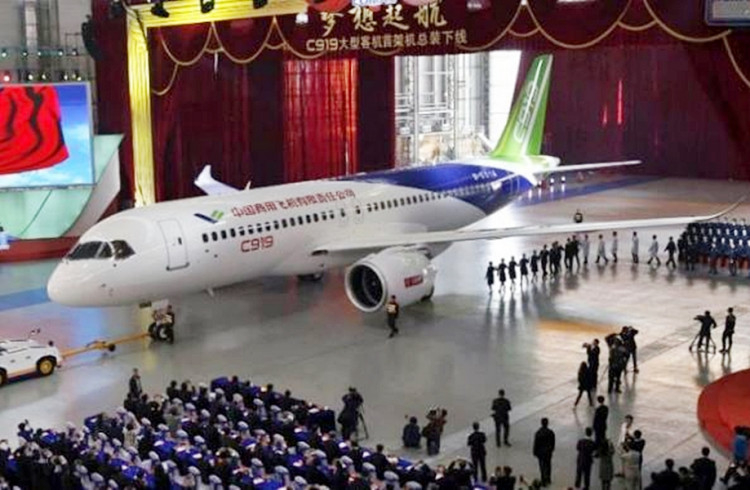China should become the world's biggest air travel market by 2033 but will continue to rely almost completely on foreign-made aircraft such as those from the Boeing Company and Airbus SE to keep this growth alive. The reason: China's problem-plagued commercial aircraft manufacturing industry refuses to take-off.
Boeing, the world's largest passenger jet maker, said China will pass the United States as the biggest air travel market in about 15 years, triggering a huge rise in aircraft sales. Its latest global industry report predicts that airlines will need 42,700 aircraft over the next 20 years, a three percent increase over the forecast number fo 2017. Sales of this massive number of planes are expected to exceed $6.3 trillion.
Much of that rich pie will be divvied-up by Boeing and Airbus, the Big Two that dominate today's passenger aircraft manufacturing industry. Only a few other manufacturers such as Bombardier in Canada and Embraer in Brazil challenge the Big Two, but only on a very small scale.
China today has no presence on the world passenger aircraft market -- simply because not one Chinese-made passenger jet is in commercial service anywhere in the world. Analysts estimate China will purchase nearly $1 trillion in airplanes over the next 20 years. Not many of these will be Chinese-made.
This extraordinary dependence on foreign aircraft makers testifies to the failures China continues to experience in its long and arduous quest to develop home grown passenger aircraft that can compete at the same level as Boeing and Airbus.
There is only one commercial passenger aircraft that has made it past the development stage and into actual flight testing -- the Comac C919. This twin-jet aircraft was originally slated to fly its first passengers in 2019 but that date has been postponed to the 2020s.
The C919 first flew in May 2017 but didn't fly again until four months later. The two test aircraft have only made about two dozen flights since that time, a total far lower than the normal schedule for a new commercial jet.
"After the maiden flight in May, the aircraft has been undergoing a lot of checks and adjustments, not only for future test flights but for getting ready to move to another airport," said a Comac spokesman. "The testing for the C919 is progressing according to plan."
The dearth of flight time, however, is a huge setback for the development of the C919, which is a flagship project of president Xi Jinping, who wants to build a globally competitive aerospace industry and reduce China's dependence on foreign aircraft manufacturers.
"It just doesn't bode well," said Chad Ohlandt, a senior engineer at the RAND Corporation, an American think tank based in California. "What should happen is the first two or three prototypes roll off the line and go through a series of tests -- at least a few dozens." This hasn't occurred.
The long-delayed Comac C919, China's first indigenous passenger jetliner, is a joint project of state-owned Commercial Aircraft Corporation of China Ltd (Comac) and Irish low-cost airline Ryanair. The C919 is part of China's long-term goal of breaking the Airbus and Boeing's duopoly.
The plane will compete against the Airbus A320neo; the Boeing 737 MAX; the Bombardier CSeries and Russia's Irkut MC-21 -- all of which are modern short- to medium-range twinjet narrow-body airliners.
Comac C919 is a family of 158- to 174-seat narrow-body twin-engine jet airliners. It will be the largest commercial airliner designed and built in China since the defunct Shanghai Y-10.
First deliveries of the C919 were originally scheduled for late 2018. The roll-out for the C919 was held in Shanghai on Nov. 2, 2015.






